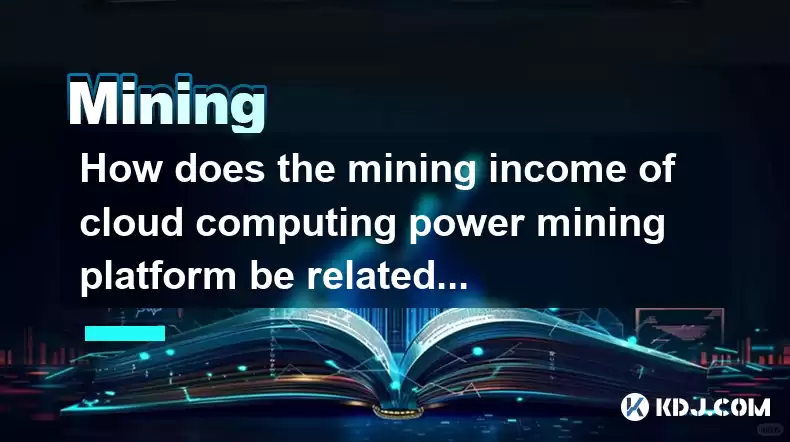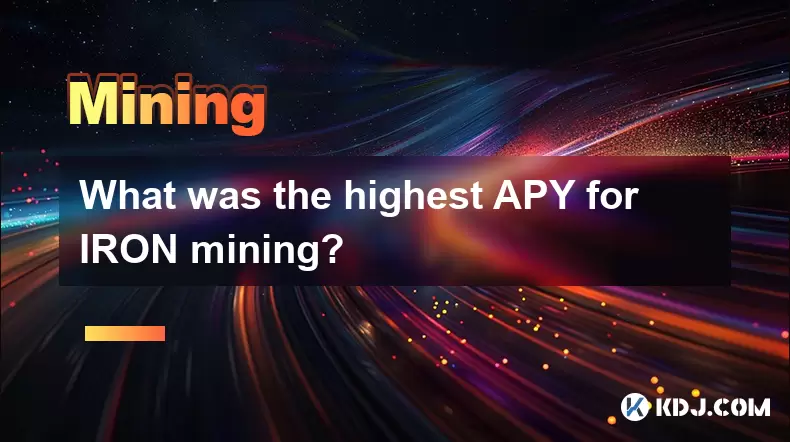-
 Bitcoin
Bitcoin $115000
0.12% -
 Ethereum
Ethereum $3701
4.50% -
 XRP
XRP $3.081
2.99% -
 Tether USDt
Tether USDt $0.0000
-0.01% -
 BNB
BNB $767.9
1.45% -
 Solana
Solana $169.5
3.13% -
 USDC
USDC $0.9999
0.01% -
 Dogecoin
Dogecoin $0.2106
4.30% -
 TRON
TRON $0.3334
1.62% -
 Cardano
Cardano $0.7564
2.54% -
 Stellar
Stellar $0.4165
0.76% -
 Hyperliquid
Hyperliquid $38.75
0.25% -
 Sui
Sui $3.593
3.00% -
 Chainlink
Chainlink $17.08
3.59% -
 Bitcoin Cash
Bitcoin Cash $573.6
4.35% -
 Hedera
Hedera $0.2508
-0.84% -
 Avalanche
Avalanche $23.07
6.46% -
 Ethena USDe
Ethena USDe $1.001
-0.02% -
 Litecoin
Litecoin $120.8
8.17% -
 UNUS SED LEO
UNUS SED LEO $8.943
-0.32% -
 Toncoin
Toncoin $3.400
-5.60% -
 Shiba Inu
Shiba Inu $0.00001255
1.54% -
 Uniswap
Uniswap $9.908
6.32% -
 Polkadot
Polkadot $3.718
2.10% -
 Monero
Monero $303.0
-0.74% -
 Dai
Dai $0.9999
-0.02% -
 Bitget Token
Bitget Token $4.392
0.91% -
 Cronos
Cronos $0.1403
6.31% -
 Pepe
Pepe $0.00001076
1.13% -
 Aave
Aave $267.2
1.80%
How does the mining income of cloud computing power mining platform be related to mining pool allocation?
The allocation of mining pools significantly impacts the income of cloud computing power mining platforms by affecting reward distribution and operational consistency.
Apr 02, 2025 at 01:56 am

The relationship between the mining income of a cloud computing power mining platform and the allocation of mining pools is a crucial aspect of cryptocurrency mining. Mining income is influenced by various factors such as the efficiency of the mining hardware, electricity costs, and the specific cryptocurrency being mined. However, the allocation of mining pools plays a significant role in determining the consistency and potential profitability of the mining operation. Mining pools are groups of miners who combine their computing power to increase their chances of solving the cryptographic puzzles required to mine new blocks. The income from these pools is then distributed among the participants based on their contributed hash rate.
Understanding Mining Pools and Their Allocation
Mining pools are essential for miners who might not have enough computing power to mine blocks on their own. By joining a pool, miners can share the rewards more consistently, albeit in smaller amounts. The allocation of mining pools refers to how the total reward from a successfully mined block is distributed among the pool members. This allocation is typically based on the proportion of hash power each miner contributes to the pool. Different pools may use different methods for allocation, such as Pay Per Share (PPS), Proportional, or Score-based systems. Each method has its own advantages and can affect the miner's income differently.
Impact of Pool Allocation on Mining Income
The method of pool allocation directly impacts the mining income of a cloud computing power mining platform. For instance, in a PPS system, miners receive a fixed amount of cryptocurrency for each unit of hash power they contribute, regardless of whether the pool successfully mines a block. This can provide a more predictable income stream, which is beneficial for cloud mining platforms that need to manage their financials carefully. On the other hand, proportional systems distribute rewards based on the number of shares contributed by each miner during the round in which a block is found. This can lead to higher variance in income but potentially higher rewards if a block is mined quickly.
Cloud Computing Power Mining Platforms and Pool Allocation
Cloud computing power mining platforms lease computing power to users, allowing them to mine cryptocurrencies without the need for personal hardware. The income these platforms generate is directly tied to the efficiency and profitability of the mining operations they manage. The choice of mining pool and the allocation method used by that pool can significantly affect the platform's overall income. Platforms often choose pools that offer the best balance between reliability, fees, and reward distribution methods. By selecting pools with favorable allocation methods, cloud mining platforms can maximize their income and provide better returns to their users.
Factors Influencing Pool Allocation and Mining Income
Several factors influence how pool allocation affects mining income. The first is the hash rate contributed by the platform to the pool. A higher hash rate means a larger share of the rewards, but it also requires more energy and potentially higher costs. The second factor is the pool's fee structure. Pools charge fees for their services, and these fees can eat into the mining income. Lower fees can mean higher net income for the platform. The third factor is the reward distribution method used by the pool. As mentioned earlier, different methods like PPS or proportional can lead to different income patterns. Finally, the volatility of the cryptocurrency being mined can also impact income, as the value of the rewards can fluctuate.
Strategies for Maximizing Mining Income Through Pool Allocation
To maximize mining income, cloud computing power mining platforms can employ several strategies related to pool allocation. One strategy is to diversify across multiple pools. By spreading their hash power across different pools, platforms can mitigate the risk of downtime or poor performance from a single pool. Another strategy is to monitor and adjust pool allocations based on performance. Platforms can analyze the performance of different pools and adjust their allocations to favor those that offer the best returns. Additionally, platforms can negotiate better terms with pools, such as lower fees or more favorable reward distribution methods. By actively managing their pool allocations, cloud mining platforms can optimize their income and provide better returns to their users.
Case Studies: Real-World Examples of Pool Allocation and Mining Income
Examining real-world examples can provide insight into how pool allocation affects mining income. For instance, consider a cloud mining platform that initially joined a pool using a proportional reward system. The platform experienced high variance in income, which made financial planning challenging. By switching to a pool using a PPS system, the platform achieved a more predictable income stream, which improved its financial stability. Another example is a platform that diversified its hash power across multiple pools. This strategy helped the platform maintain consistent income even when one pool experienced technical issues. These case studies illustrate the importance of choosing the right pool and allocation method to optimize mining income.
Challenges and Considerations in Pool Allocation
While pool allocation can significantly impact mining income, it also comes with challenges and considerations. One challenge is the complexity of managing multiple pools. Platforms need to monitor and adjust their allocations across different pools, which can be time-consuming and require sophisticated management systems. Another consideration is the trade-off between predictability and potential rewards. PPS systems offer more predictable income but may result in lower overall rewards compared to proportional systems. Platforms must weigh these factors when deciding on their pool allocation strategy. Additionally, pool reliability is a crucial factor. Platforms need to choose pools that are reliable and have a good track record of uptime and performance to ensure consistent income.
Future Trends in Pool Allocation and Mining Income
The future of pool allocation and its impact on mining income is likely to be influenced by several trends. One trend is the increasing use of AI and machine learning to optimize pool allocations. Platforms may use AI to analyze pool performance and automatically adjust allocations to maximize income. Another trend is the development of new reward distribution methods. As the mining industry evolves, new methods may emerge that offer better balance between predictability and potential rewards. Finally, the growth of decentralized mining pools could change the landscape of pool allocation. Decentralized pools may offer more transparency and lower fees, potentially increasing mining income for platforms that participate in them.
Common Questions Related to Mining Income and Pool Allocation
Q: How does the choice of mining pool affect the income of a cloud computing power mining platform?
A: The choice of mining pool affects the income of a cloud computing power mining platform through the pool's fee structure, reward distribution method, and reliability. Pools with lower fees and favorable reward distribution methods can increase net income. Additionally, reliable pools ensure consistent income, while unreliable pools can lead to downtime and lost income.
Q: What are the different methods of pool allocation, and how do they impact mining income?
A: Different methods of pool allocation include Pay Per Share (PPS), Proportional, and Score-based systems. PPS provides a fixed reward per unit of hash power, offering more predictable income. Proportional systems distribute rewards based on the number of shares contributed, leading to higher variance but potentially higher rewards. Score-based systems consider the difficulty of shares, aiming to balance predictability and potential rewards.
Q: How can cloud computing power mining platforms maximize their mining income through pool allocation?
A: Platforms can maximize their mining income by diversifying across multiple pools, monitoring and adjusting pool allocations based on performance, and negotiating better terms with pools. By actively managing their pool allocations, platforms can optimize their income and provide better returns to their users.
Q: What are the challenges and considerations in managing pool allocations for mining income?
A: Challenges include the complexity of managing multiple pools and the trade-off between predictability and potential rewards. Considerations include choosing reliable pools and balancing the benefits of different reward distribution methods. Platforms must carefully manage these factors to optimize their mining income.
Q: What future trends might influence pool allocation and mining income?
A: Future trends include the increasing use of AI and machine learning to optimize pool allocations, the development of new reward distribution methods, and the growth of decentralized mining pools. These trends could lead to more efficient and profitable mining operations for cloud computing power mining platforms.
Disclaimer:info@kdj.com
The information provided is not trading advice. kdj.com does not assume any responsibility for any investments made based on the information provided in this article. Cryptocurrencies are highly volatile and it is highly recommended that you invest with caution after thorough research!
If you believe that the content used on this website infringes your copyright, please contact us immediately (info@kdj.com) and we will delete it promptly.
- Solana Memecoin Launchpads: A Wild Ride with LetsBONK.fun Leading the Charge
- 2025-08-05 17:30:12
- Crypto Volatility & Token Unlocks: Navigating the Storm
- 2025-08-05 16:30:13
- SUI Traders Eye Discount: Is Now the Time to Buy?
- 2025-08-05 16:30:13
- Bitcoin Price in August: Will the BTC Rally Continue?
- 2025-08-05 17:35:12
- Decentralized Perpetuals Soar: Volume Hits All-Time High, Leaving CEXs in the Dust?
- 2025-08-05 16:50:12
- Decoding MYCUSD: Crypto Forecasting for Digital Asset Success
- 2025-08-05 16:50:12
Related knowledge

What was the highest APY for IRON mining?
Jul 23,2025 at 05:14am
Understanding IRON Token and Its Mining MechanismThe IRON token is a stablecoin that operates within the Iron Finance ecosystem, primarily on blockcha...

What is impermanent loss in IRON pools?
Jul 23,2025 at 09:00am
Understanding Impermanent Loss in the Context of IRON PoolsImpermanent loss is a phenomenon that affects liquidity providers in decentralized finance ...

How to claim rewards from IRON mining?
Jul 23,2025 at 02:21pm
Understanding IRON Mining and Reward MechanismsIRON Finance operated as a decentralized finance (DeFi) protocol on the Polygon and Binance Smart Chain...

How to claim rewards from IRON mining?
Jul 29,2025 at 05:07am
Understanding IRON Mining and Reward MechanismIRON is a dual-token system designed to stabilize the value of a synthetic asset through a combination o...

IRON mining tutorial for beginners
Jul 27,2025 at 12:01am
What Is IRON and How Does It Work in the Cryptocurrency Ecosystem?IRON is a cryptocurrency token that operates on the Binance Smart Chain (BSC) and is...

How to calculate APY for IRON mining?
Jul 28,2025 at 09:49am
Understanding APY in the Context of IRON Token MiningWhen engaging in IRON token mining within decentralized finance (DeFi) platforms, Annual Percenta...

What was the highest APY for IRON mining?
Jul 23,2025 at 05:14am
Understanding IRON Token and Its Mining MechanismThe IRON token is a stablecoin that operates within the Iron Finance ecosystem, primarily on blockcha...

What is impermanent loss in IRON pools?
Jul 23,2025 at 09:00am
Understanding Impermanent Loss in the Context of IRON PoolsImpermanent loss is a phenomenon that affects liquidity providers in decentralized finance ...

How to claim rewards from IRON mining?
Jul 23,2025 at 02:21pm
Understanding IRON Mining and Reward MechanismsIRON Finance operated as a decentralized finance (DeFi) protocol on the Polygon and Binance Smart Chain...

How to claim rewards from IRON mining?
Jul 29,2025 at 05:07am
Understanding IRON Mining and Reward MechanismIRON is a dual-token system designed to stabilize the value of a synthetic asset through a combination o...

IRON mining tutorial for beginners
Jul 27,2025 at 12:01am
What Is IRON and How Does It Work in the Cryptocurrency Ecosystem?IRON is a cryptocurrency token that operates on the Binance Smart Chain (BSC) and is...

How to calculate APY for IRON mining?
Jul 28,2025 at 09:49am
Understanding APY in the Context of IRON Token MiningWhen engaging in IRON token mining within decentralized finance (DeFi) platforms, Annual Percenta...
See all articles

























































































